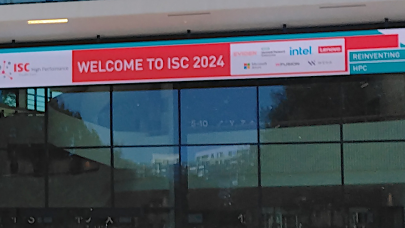Last month, the Massachusetts Life Sciences Center (MLSC) announced more than $9 million in funding for life science-related projects in Western Massachusetts. Approximately half of that award, or $4.54 million, will allow the Massachusetts Green High Performance Computing Center (MGHPCC) in Holyoke, Mass., to create a cloud-based resource for computational biology. The remaining funds were split between several local community colleges and technical schools.
 MLSC President and CEO Susan Windham-Bannister described the impetus and framing for the grants. The MLSC is administering a 10-year, billion-dollar initiative enacted by the Massachusetts legislature in 2008. The investment will go toward strengthening life sciences – a cluster of sectors that includes biotech, pharmaceuticals, medical devices, medical devices and bioinformatics.
MLSC President and CEO Susan Windham-Bannister described the impetus and framing for the grants. The MLSC is administering a 10-year, billion-dollar initiative enacted by the Massachusetts legislature in 2008. The investment will go toward strengthening life sciences – a cluster of sectors that includes biotech, pharmaceuticals, medical devices, medical devices and bioinformatics.
As a funding and investment organization, one of MLSC’s main goals is to invest dollars in capital projects that play to the different strengths of the regions within the state. Another goal is to invest in unique resources that support innovation in the life sciences. And the final piece of their mission is to strategically leverage funds to encourage collaboration.
The $4.5 million grant to the MGHPCC meets all of those objectives, according to Windham-Bannister.
The Massachusetts Green High Performance Computing Center
The MGHPCC is a brand-new, state-of-the-art datacenter dedicated to research computing. It was put together by five area universities: Boston University, Harvard University, the Massachusetts Institute of Technology, Northeastern University and the University of Massachusetts.
The Center serves as a nucleus for collaborative work across the partner institutions, says John T. Goodhue, executive director of the Massachusetts Green High Performance Computing Center Inc. “When everyone’s data is in the same place, it’s easier to exchange it, and when they’re all working on and around the same facility, it’s easier to get conversations started,” he adds.
The MLSC award will support the creation of the Commonwealth Computational Cloud for Data Driven Biology. According to Goodhue, it is the first MGHPCC-based system that will be jointly owned by all five universities. The proposal focused on the advantages of creating a resource that was larger than any of the individual schools could feasibly stand up on their own. The project also includes industry partners Astra-Zeneca, Pfizer, Merck, Merrimack Pharmaceuticals, EMC and IBM, among others.
MLSC proposal team leader Chris Hill envisions the facility as a virtual meeting place. He says it’s too soon to commit to hardware and design specifications, but he reports the system will support both genetics sequencing and systems biology work. The hardware decisions will be driven by those areas, says Hill, who is also the principal research engineer at MIT’s Department of Earth, Atmospheric and Planetary Sciences. He adds that his colleagues are “interested in exploring the innovative spaces that will allow researchers to do things that they cannot easily do at the moment.”
Asked whether it will be more of an HPC machine or a big data machine, Hill is quick to respond that they want to bring the compute and the data together, so it will need to satisfy big-compute and big-data demands. “On the genetics side, there’s a lot of data processing that goes on, but on the systems biology side, there’s a lot of modeling work. These two models can drive architectures in somewhat different directions,” says Hill, “So it may be we end up with a hybrid or it may be that there’s a nice solution out there that addresses both under one umbrella.”
As the architectural details have yet to be worked out, the cloudiness of the system is still unclear. Hill sees the virtue in “giving the machine a personality that meets researchers’ needs” and says virtualization may be a part of making this happen. He describes a resource that is more on-demand, more directly tied-in to lab analysis, experiments, measurements in hospitals and so on. “Rather than the traditional HPC batch environment, there will be a more responsive and interactive way of operating with this system,” he says.
Hill adds that the design team is keeping a close eye on advancements in server architectures, especially in the microserver space. “It’s too early to do anything with them this year,” he says, “but they are on an interesting trajectory in terms of performance per joule of energy.”
The partners are rolling out the new system in three stages, which will allow them to evolve the technology both in response to user needs and in regards to the latest technology developments. They are aiming to have an initial system up by the end of the year.
Once online, the Commonwealth Computational Cloud will be part of a high-speed academic network. The MGHPCC partners have been investing time and money toward creating a network infrastructure that enables fast remote access. End-to-end fiber supports 10 Gigabit speeds between the partner institutions and the datacenter, which is also hooked into high-speed research networks like Northern Crossroads and Internet2.
Changing Lives
The MGHPCC is located in Holyoke, Mass., a successful paper mill town in its heyday. The site is not far from some of the best colleges in the country, but it has suffered from high rates of unemployment in recent decades. Winning the bid for this state-of-the-art computing center is a real boon for the community.
Awarding the funds for a life science-based computational project was a strategic move by the MLSC.
“Some of the biggest breakthroughs in life science are being enabled by breakthroughs in computing. Personalized medicine, for example, is enabled by genomics. Genomics and genome-mapping has been enabled by high-performance computing,” remarks MLSC CEO Windham-Bannister.
“It’s important for us to make investments that impact the pace and success of innovation in the life sciences and we believe that high-performance computing is crucial,” she adds.
Investment in life sciences has not only enabled significant quality-of-life benefits, but it has been a proven model for driving economic development – a point that Windham-Bannister emphasizes:
“There are so many strong life sciences communities around the US – Massachusetts, California, Ohio, North Carolina, New York, Texas, and others – all of us are in search of ways to continue to make innovation in the life sciences the hallmark of the US, the hallmark of our state, and a way in which we can reinvent the economy here in the US. I think all of our states have seen the erosion of economic sectors that were historically very strong, and we need to find a way to replace those, and the 21st century economy appears to be the innovation economy.”
The MLSC CEO expects that the way we identify new drugs and new biologics is going to be fundamentally altered by high-performance, high-throughput computing. She suggests that in addition to supporting the research of hospitals and academic institutions, the new cloud-based system will attract the interest of life sciences outfits, companies like Pfizer, Novartis, Biogen, Amgen, Synovis, all of which have grown their presence in Massachusetts. “Our hope,” says Windham-Bannister, “is they will take advantage of this resource to support their drug discovery and drug development activities.”
Asked what she is most excited about in the field of life sciences, Windham-Bannister points to the important advances coming from the fields of personalized medicine and precision medicine, especially as it relates to treating pediatric cancer. “More and more, we’re seeing this notion of exactly the right drug and a companion diagnostic that goes with it so that we understand the genetic makeup of the individual and the molecular makeup of the tumor, and the very best way to treat that,” she says.
This new era brings the intelligence of a supercomputer and the ability to run massive amounts of data together, obviating the need to search one by one – which is the way diagnostics and treatments were done in the past. The ability to start with a more precise treatment to begin with is game-changing, says Windham-Bannister: “It’s computing changing our lives.”


























































